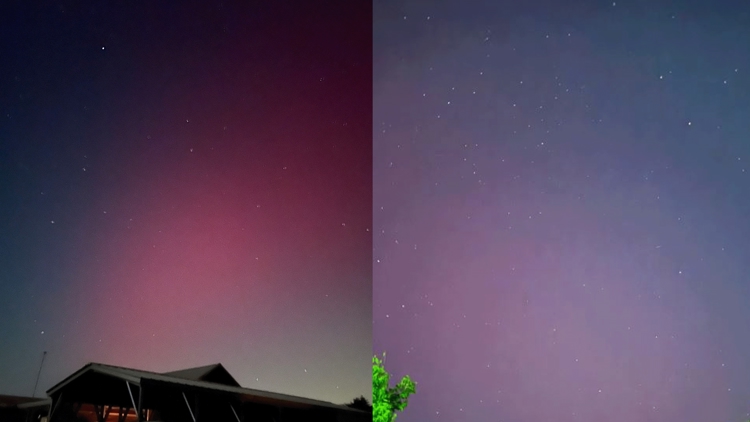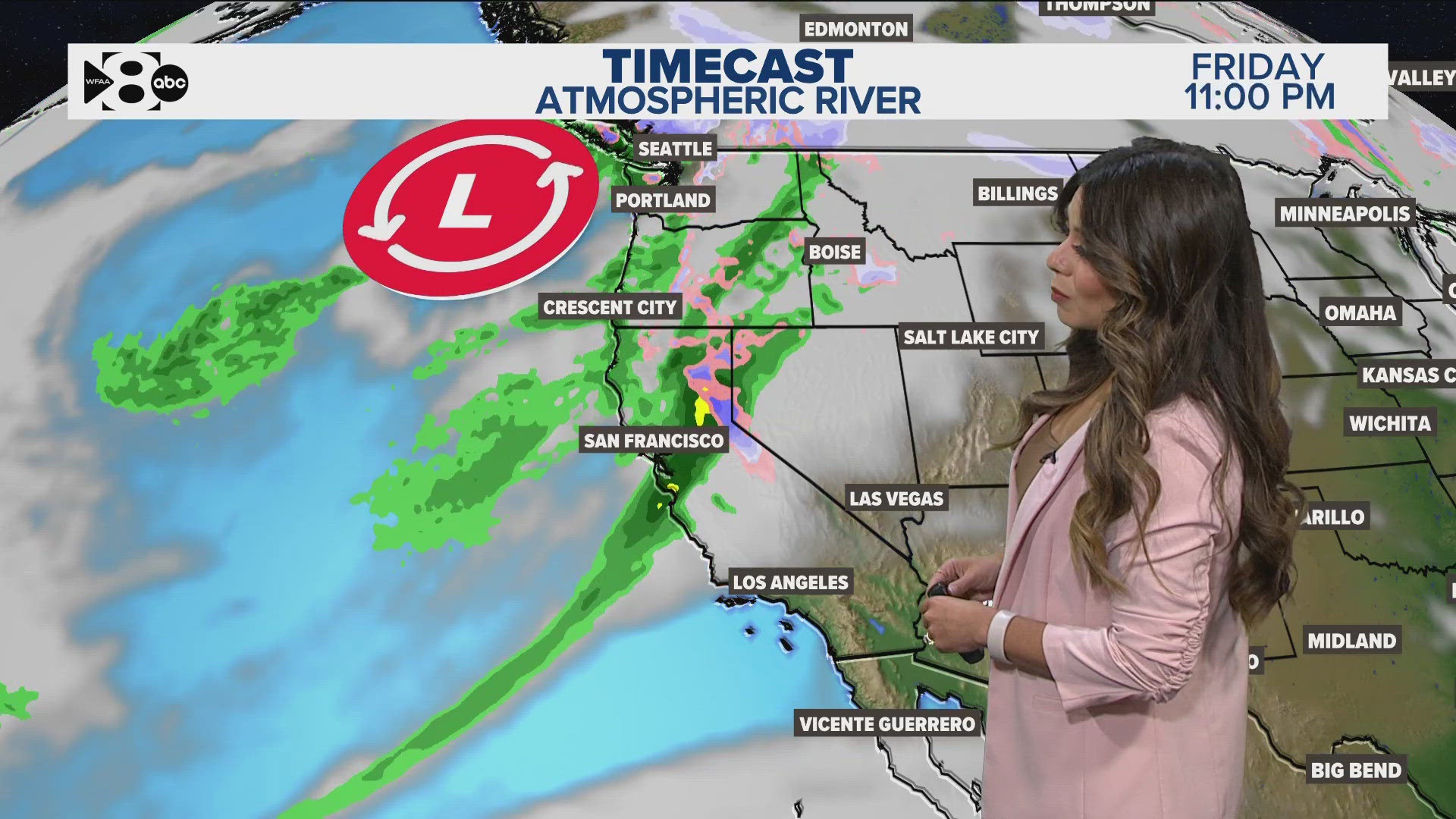DALLAS — Sky watchers were in for a rare treat this week! A strong solar storm is expected to create conditions that could bring the northern lights into view much farther south than usual. The National Oceanic and Atmospheric Administration’s (NOAA) Space Weather Prediction Center (SWPC) has issued a G3 (Strong) geomagnetic storm warning for October 10 and a G4 Geomagnetic storm watch for Oct. 11, 2024, following a powerful coronal mass ejection (CME) from the Sun.
Typically, the northern lights, or aurora borealis, are visible in regions close to the Arctic Circle. However, during periods of heightened solar activity, such as a strong geomagnetic storm, the auroras can extend farther south. And in rare cases, this includes parts of the southern United States into North Texas.
And sure enough, on Thursday night we saw multiple reports of North Texans seeing the northern lights, which were giving off a pink and purple hue in the sky.
Where can you see the Northern Lights?
On October 8, a massive solar flare erupted from sunspot AR 3848, launching a CME toward Earth. This CME arrived to Earth this morning and is what triggered a geomagnetic storm that could disrupt power grids, communication systems, and produce vibrant auroras.
A G4 geomagnetic storm, like the one predicted, is the second-highest level on the Space Weather Prediction Center's (SWPC) storm scale. This type of event can cause auroras to be visible much farther south than normal. During past G4 storms, the auroras were seen in places like Missouri and even Oklahoma. This means that while was not a guarantee, the northern lights extending their reach into North Texas was a possibility.
Will we see Northern Lights in Dallas or North Texas?
For North Texans, seeing the aurora borealis would be a rare and remarkable experience. While the exact visibility of the northern lights depends on several factors—including the strength of the storm at the time— there were several reasons worth keeping an eye on the sky Thursday night.
We are in a particularly active solar pattern, which means frequent solar storms. The sun goes through active and less active periods in roughly 11-year cycles.
Solar storms send ions and electrons toward the Earth at a million miles per hour. Most of these electrons bounce off of the Earth's protective magnetic field. Sometimes electrons still manage to get through where the magnetic field is the weakest - the north and south poles.
Electrons then interact with oxygen and nitrogen in our atmosphere. This interaction gives off energy in the form of lights causing the beautiful phenomenon we witnessed in Texas earlier this year.
If the solar storms are strong enough, the electrons travel towards the lower latitudes, as we saw Thursday night.
When can you see Northern Lights?
For those hoping to catch a glimpse of the northern lights, the best time to look would have been the night of October 10 into the early morning hours of October 11. Ideally, you’ll want to be in a dark area away from city lights to improve your chances of seeing the aurora.
The likelihood of seeing the northern lights in North Texas remained very slim -- but it did, in fact, come to fruition!
What other things can we see as a result?
In addition to the potential for auroras, the geomagnetic storm could impact satellite communications, GPS systems, and even cause minor power grid disruptions. Those who rely heavily on these systems may want to stay alert for possible service interruptions.



